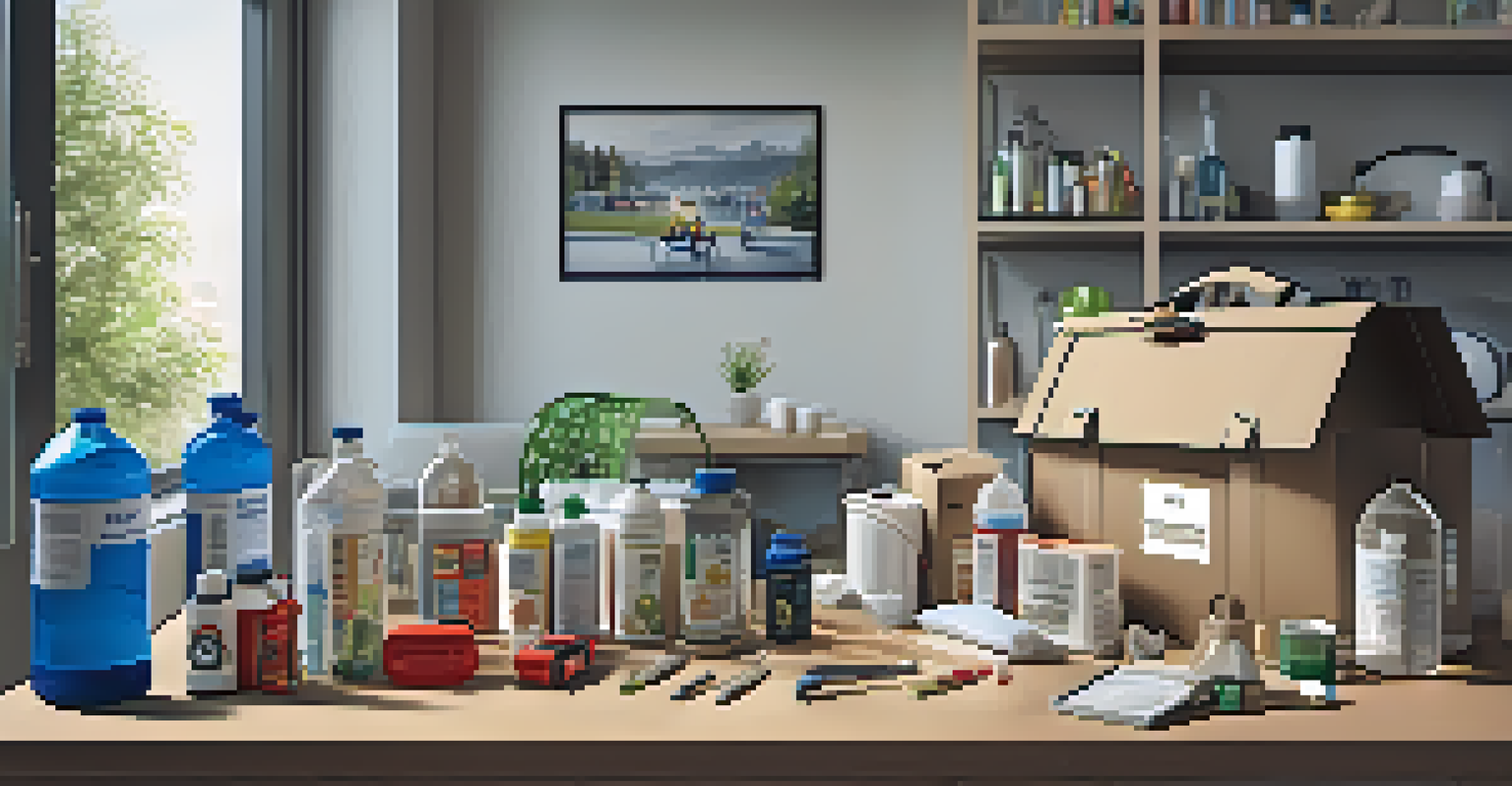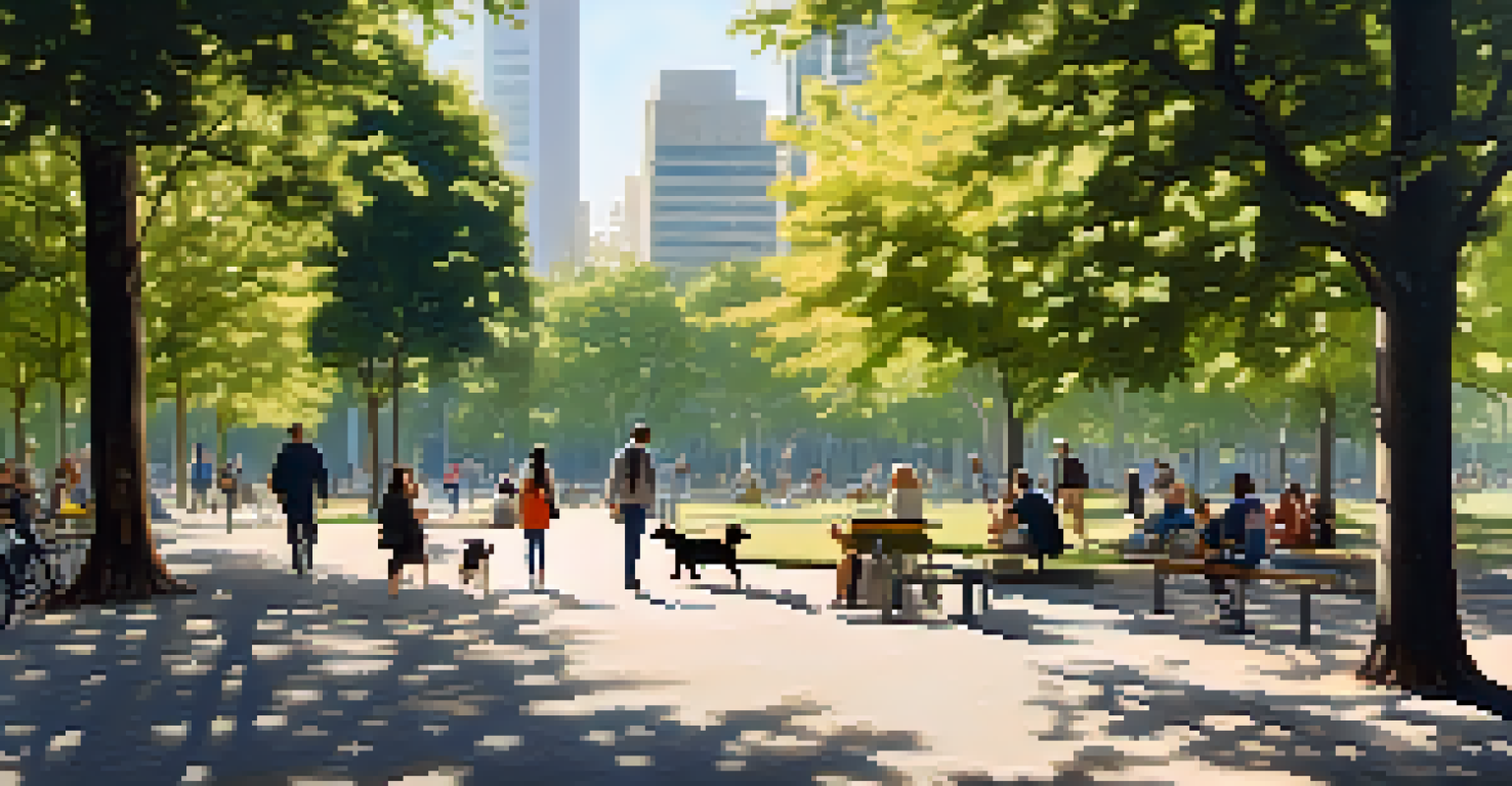Urban Survival Skills: Navigating Dangerous Situations

Understanding Urban Survival: What It Means
Urban survival skills encompass a range of techniques that help individuals navigate through potentially dangerous situations in city environments. Unlike wilderness survival, urban survival focuses on dealing with threats like crime, natural disasters, or civil unrest in densely populated areas. Understanding what urban survival entails is the first step towards preparing yourself for unexpected challenges.
The best way to predict the future is to create it.
It’s essential to recognize that urban settings present unique risks, from crowded public spaces to complex infrastructure. For example, knowing how to read a neighborhood can help you identify safe places versus areas to avoid. This foundational knowledge can empower you to respond effectively when faced with danger.
Moreover, urban survival is not just about physical skills; it also involves mental preparedness. Cultivating a mindset that prioritizes awareness and quick decision-making can be just as crucial as any physical technique. In essence, urban survival is about being equipped, both mentally and physically, to handle whatever comes your way.
Situational Awareness: The Key to Safety
Situational awareness is the ability to perceive and understand your surroundings, a vital skill in urban environments. By being attuned to what’s happening around you, you can recognize potential threats before they escalate. It's like having an internal radar that helps you navigate through crowded streets or busy public transport.

For instance, if you notice someone behaving suspiciously in a park, your ability to recognize that behavior can help you avoid a confrontation. This skill involves not only watching people but also paying attention to environmental cues, such as the presence of emergency services or unusual sounds. The more aware you are, the better prepared you’ll be to react appropriately.
Situational Awareness is Crucial
Being aware of your surroundings helps you identify potential threats and react appropriately.
Practicing situational awareness can be as simple as taking a moment to observe your surroundings when you enter a new area. Make it a habit to scan the environment regularly and trust your instincts. This proactive approach can significantly enhance your safety in any urban setting.
Emergency Preparedness: Create a Plan
Emergency preparedness is about having a plan in place for various scenarios, from natural disasters to personal safety threats. Start by identifying the potential risks in your urban area, such as earthquakes, floods, or civil unrest. Knowing what to expect can help you design a tailored emergency plan that suits your specific needs.
In a crisis, the first thing we should do is to listen and be aware of what is happening around us.
One effective strategy is to create a communication plan with your family or friends. Establishing designated meeting places and communication methods can ensure everyone stays connected during a crisis. For instance, if cell service is disrupted, having a pre-arranged location to regroup can be invaluable.
Additionally, consider assembling an emergency kit that includes essentials like water, non-perishable food, a flashlight, and a first-aid kit. Having these supplies readily available can make a significant difference in how you cope with an emergency. By being proactive, you not only improve your own safety but also contribute to the resilience of your community.
Self-Defense Basics: Protect Yourself
Understanding basic self-defense techniques can be crucial in a threatening situation. Self-defense is not about fighting but rather about protecting yourself and escaping harm. Simple techniques, such as how to break free from a wrist grab, can make a significant difference when faced with danger.
Consider enrolling in a self-defense class that focuses on practical skills tailored for urban scenarios. Many community centers and gyms offer courses that teach you how to respond effectively during an attack. Practicing these skills regularly can help you feel more confident and prepared.
Emergency Plans Save Lives
Having a tailored emergency plan and communication strategy can significantly improve your safety during crises.
Moreover, self-defense isn't solely about physical techniques; it also includes using your voice and body language to deter potential threats. Sometimes, projecting confidence and assertiveness can prevent a situation from escalating. Remember, the goal is to protect yourself and escape, not to engage in a confrontation.
Navigating Crowds: Safety in Numbers
Crowded urban environments can pose safety challenges, but there are ways to navigate them effectively. When in a crowd, try to stay aware of your surroundings and avoid distractions like your phone. This awareness can help you spot potential dangers early and react accordingly.
If you feel uneasy in a crowded space, stick close to groups of people. There’s safety in numbers, and being part of a crowd can deter unwanted attention. Additionally, keep an eye on exits and escape routes so you can quickly leave if necessary.
Practicing good crowd etiquette can also enhance your safety. Be mindful of personal space, and avoid engaging with aggressive individuals. By maintaining a calm demeanor and being aware of your surroundings, you can navigate crowds more safely and confidently.
De-escalation Techniques: Avoiding Conflict
De-escalation techniques can be invaluable in urban environments, where conflicts may arise unexpectedly. Learning how to diffuse tension can prevent a situation from escalating into violence. Simple strategies like active listening and maintaining a calm demeanor can often help soothe aggressive individuals.
For example, if you find yourself in a heated conversation, try to understand the other person’s perspective. Acknowledging their feelings can sometimes de-escalate the situation. Additionally, using non-threatening body language—such as keeping your hands visible—can also help ease tensions.
Self-Defense Empowers You
Learning basic self-defense techniques builds confidence and equips you to handle threatening situations effectively.
Always remember that your goal is to avoid conflict, not to win an argument. If a situation feels like it’s getting out of hand, it’s wise to disengage and remove yourself from the area. By prioritizing safety and communication, you can navigate potential conflicts more effectively.
Using Technology for Urban Survival
In today’s digital age, technology plays a significant role in urban survival. Smartphones equipped with apps can provide real-time information about emergencies, helping you stay informed and make better decisions. From navigation apps to emergency alert systems, having the right tools can enhance your safety.
Consider downloading apps that offer safety features, such as emergency contacts or location sharing. These tools can be a lifeline in times of crisis, allowing friends and family to know your whereabouts. Additionally, familiarize yourself with local resources, such as shelters or emergency services, accessible through these apps.

However, it’s essential to remain aware of your surroundings even while using technology. Relying solely on your device can make you vulnerable to potential threats. By balancing technology with situational awareness, you can maximize your safety in urban environments.